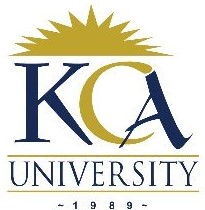
UNIVERSITY EXAMINATIONS: 2016/2017
EXAMINATION FOR THE DEGREE OF BACHELOR OF SCIENCE IN
INFORMATION TECHNOLOGY
BIT3107 WIRELESS NETWORKS TECHNOLOGIES
FULL TIME/PART TIME/DISTANCE LEARNING
SPECIAL /SUPPLEMENTARY EXAMINATION
DATE: JULY, 2017 TIME: 2 HOURS
INSTRUCTIONS: Answer Question One & ANY OTHER TWO questions.
QUESTION ONE [30 MARKS]
a. (i) Describe briefly the Bluetooth technology. (3 Marks)
(ii) State any five prevalent applications of Bluetooth. (5 Marks)
b. (i) Explain briefly the cellular network organization (3 Marks)
(ii) State four approaches to cope with increasing capacity in cellular networks.
(4 Marks)
c. Handoff is the process that occurs when a mobile is “handed over” from one access point
to another, i.e., the access point which the mobile is using changes. State three handoff
goals. (3 Marks)
d. State four goals of Wireless Application Protocol (WAP). (4 Marks)
e. Describe the three basic capabilities of mobile IP. (6 Marks)
f. Describe how Frequency Hoping Spread Spectrum (FHSS) operates (2 Marks)
QUESTION TWO [20 MARKS]
a. Describe how the following components function in RFID system
(i) Antenna (2 Marks)
(ii) Tags/transponders (3 Marks)
(iii) Readers (2 Marks)
b. Describe the major differences between active and passive tags in the RFID system
(4 Marks)
c. Describe some common threats to WLANs (6 Marks)
d. State three factors which limit the number of subchannels provided within a satellite
channel via FDMA. (3 Marks)
QUESTION THREE [20 MARKS]
a. In relation to WLANs:
(i) What is an SSID? (1 Mark)
(ii) How much overlap is suggested between wireless cells? (1 Mark)
(iii) How much overlap is suggested between an access point and an access
point serving as a repeater? (1 Mark)
(iv) Which service set is associated to the ad hoc mode? (1 Mark)
b. WLAN clients have the ability to shift data rates while moving. Explain the significance
of this in relation to IEEE 802.11b standard. (4 Marks)
c. Define the following terminologies as used in WLANs
(i) Beacons (1 Mark)
(ii) Probes (1 Mark)
(iii) Authentication (1 Mark)
(iv) Association (1 Mark)
d. Discuss why wireless LANs (WLANs) have become so popular. (4 Marks)
e. State two advantages and two disadvantages of the GEO satellite orbit.
` (4 Marks)
QUESTION FOUR [20 MARKS]
a. “Fading” and “Multipath” are two transmission impairments that affect signals in a
wireless environment. Briefly explain them. (4 Marks)
b. State four rules that apply to data transmission over radio waves. (4 Marks)
c. What are the key limitations associated with wireless systems? (4 Marks)
d. (i) If the time required for the completion of one sine wave is 0.1 s, what is the
frequency of the wave? If the wave’s period is reduced to 0.05 s, what is its new
frequency? (2 Marks)
(ii) Differentiate between the period and the frequency of a signal. (2 Marks)
e. GPRS is a wireless Packet Switched Data. State any four of its characteristics.
(4 Marks)
QUESTION FIVE [20 MARKS]
a. Compare and contrast bluetooth and IEEE 802.11b (6 Marks)
b. PCM (Pulse Code Modulation) is the process in which a signal is sampled, and the
magnitude of the each sample with respect to a fixed reference is quantized and converted
by coding to a digital signal.
(i) Define sampling, quantization and encoding. (3 Marks)
(ii) State Nyquist Sampling Theorem (2 Marks)
(iii) Voice has frequency ranging from (approximately) 0 to 4000 Hz.
To reconstruct the signal when digitized, at what rate should samples be
taken? (1 Mark)
c. Wireless LANs can accommodate various network topologies. The standard defines a
BSS as a group of stations that communicate with each other. In this regard, discuss
briefly the following 802.11 toplogies:
(iii) Ad hoc networks. (2 Marks)
(iv) Basic Service Set (BSS) (2 Marks)
(iii) Extended Service Set (ESS) (2 Marks)
d. Adequate capacity is extremely essential in telecommunications systems, where capacity
is defined as the greatest number of users that a telecommunications system can serve
given a predetermined grade of service (GoS). Outline your understanding of grade of
service (GoS).
(2 Marks)
